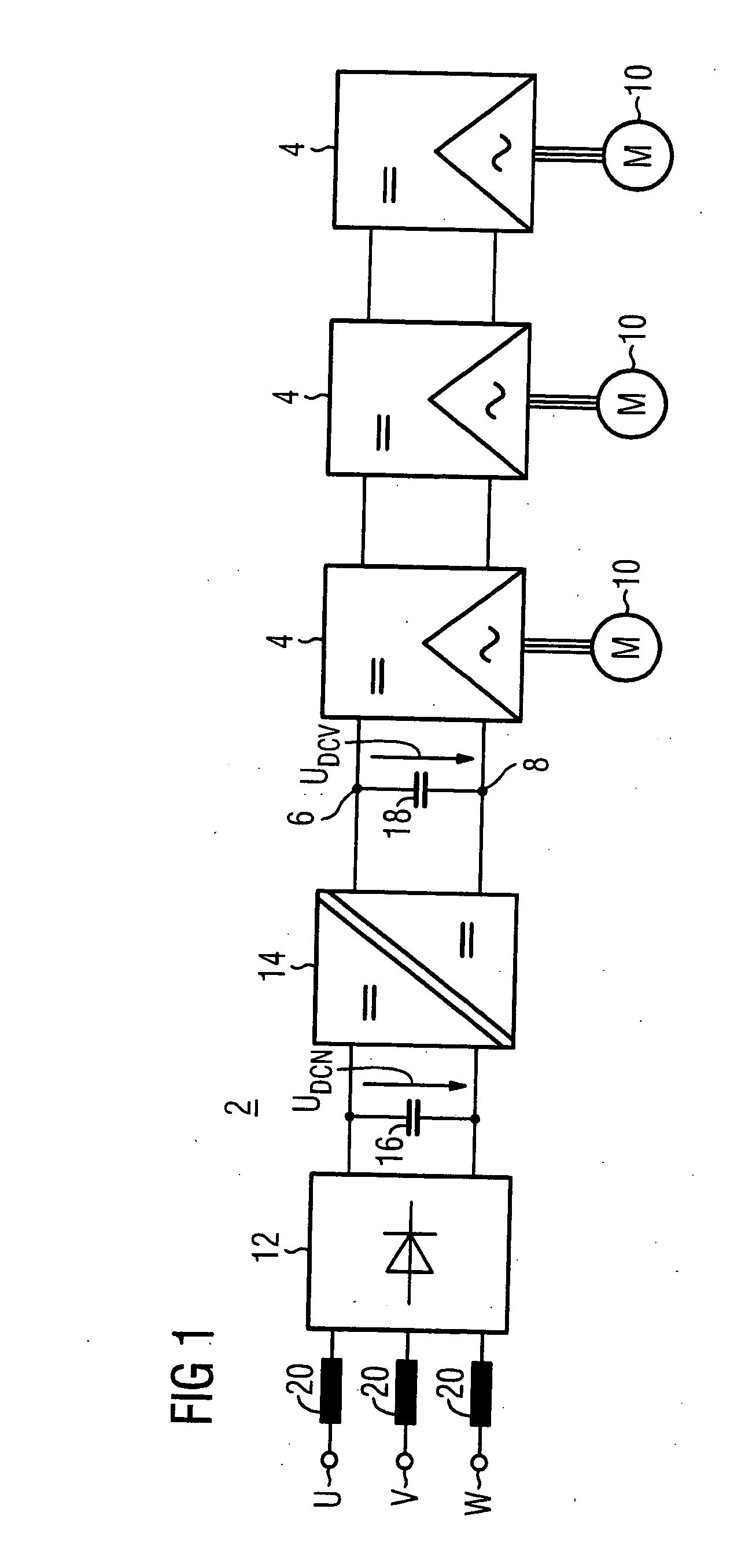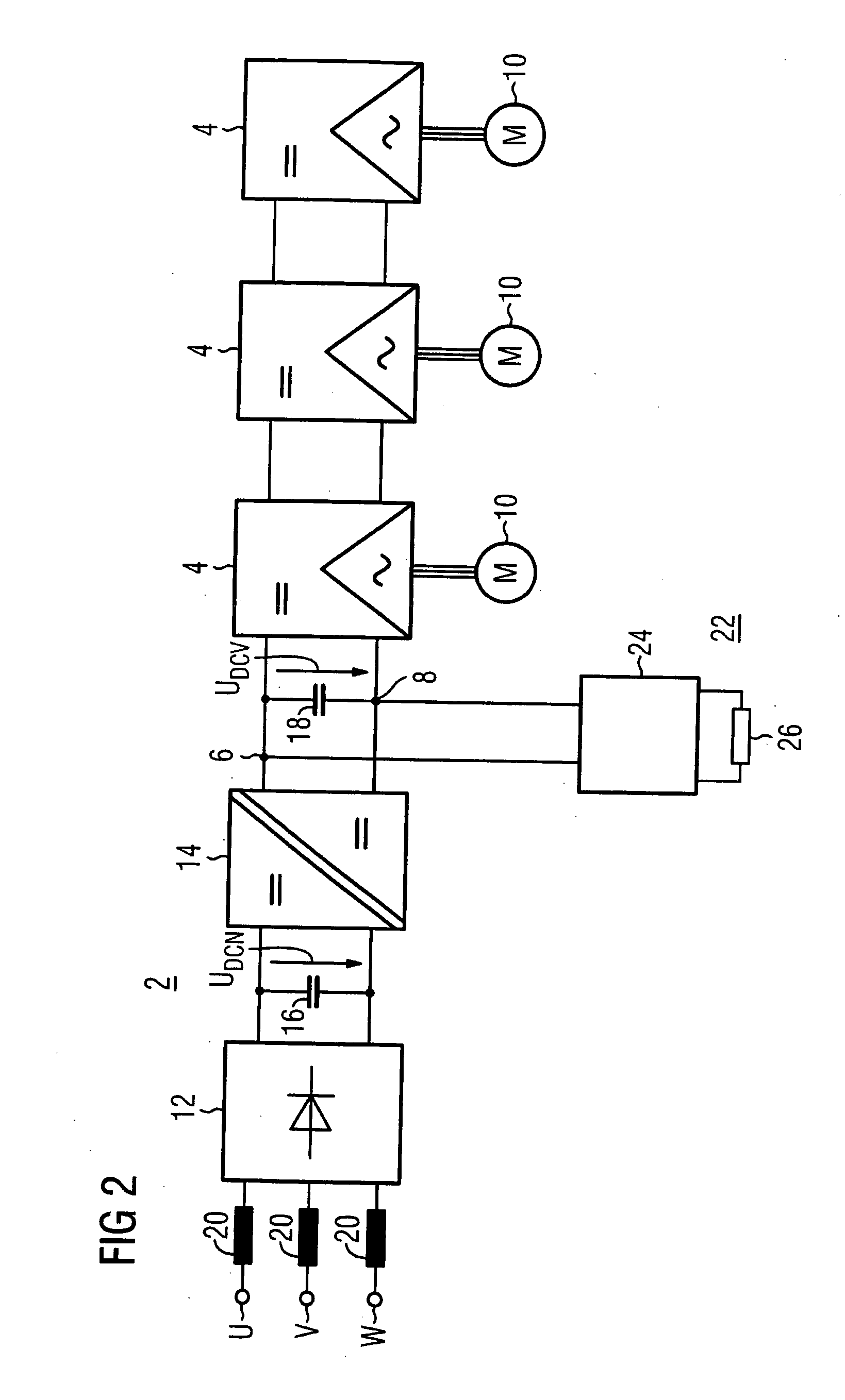Drive system
a technology of drive system and drive shaft, which is applied in the direction of motor/generator/converter stopper, emergency power supply arrangement, process and machine control, etc., can solve the problems that the brake resistor b>26/b> may require a considerable amount of space, and achieve the effect of reducing the complexity of the energy recovery device and its electrical connection
- Summary
- Abstract
- Description
- Claims
- Application Information
AI Technical Summary
Benefits of technology
Problems solved by technology
Method used
Image
Examples
first embodiment
[0027] Turning now to the drawing, and in particular to FIG. 3, there is shown an energy recovery device 28 according to the invention, which has as an input a DC / DC converter 30 and as an output a line-commutated bidirectional rectifier 32, with an output of the DC / DC converter 30 being connected to the DC input side of the bidirectional rectifier 32. The DC supply voltage UDCV of the inverters 4 is applied to the input terminals 34 and 36 of the energy recovery device 28, whereas a voltage UDCVR, which is also referred to as energy recovery voltage and has an amplitude that is greater than an equivalent DC value of the line voltage of a supply grid, is applied to the output terminals 38 and 40 of the DC / DC converter 30. Since the line-commutated bidirectional rectifier 32 of the energy recovery device 28 conducts current in both directions, the voltage drop between the energy recovery voltage UDCVR and the DC-equivalent value of the line voltage can cause current to flow through t...
second embodiment
[0034]FIG. 6 shows a drive system of the invention, whereby the line-commutated converter 12 is configured for bidirectional current flow. As schematically shown in FIG. 6, electronically controllable switches are connected electrically in parallel with each diode of this converter, with the switches switched to a conducting state only during the conducting phases of the diodes, thereby allowing bidirectional current flow. This embodiment of the bidirectional rectifier 12 therefore corresponds to the line-commutated bidirectional rectifier 32 of the energy recovery device 28 of FIG. 3. Because the line-side converter 12 of the central power supply 2 of the drive system is then always capable of energy recovery, the converter 32 shown in FIG. 3 can be omitted from the energy recovery device 28, so that only the DC / DC converter 30 remains in this embodiment of the energy recovery device 28. Moreover, the output of this embodiment of the energy recovery device 28 is also no longer conn...
PUM
 Login to View More
Login to View More Abstract
Description
Claims
Application Information
 Login to View More
Login to View More - R&D
- Intellectual Property
- Life Sciences
- Materials
- Tech Scout
- Unparalleled Data Quality
- Higher Quality Content
- 60% Fewer Hallucinations
Browse by: Latest US Patents, China's latest patents, Technical Efficacy Thesaurus, Application Domain, Technology Topic, Popular Technical Reports.
© 2025 PatSnap. All rights reserved.Legal|Privacy policy|Modern Slavery Act Transparency Statement|Sitemap|About US| Contact US: help@patsnap.com



